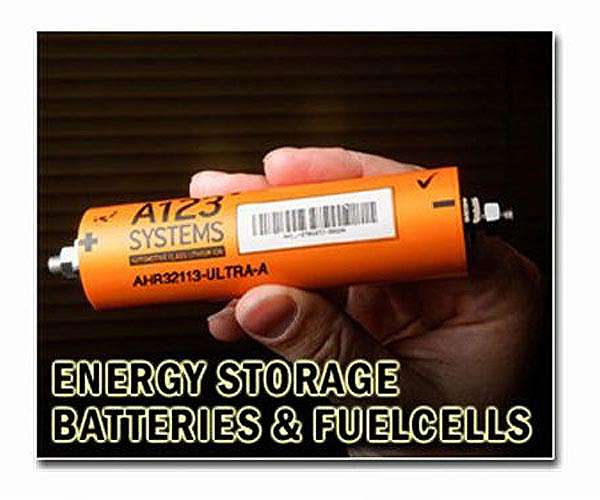Researchers crack the code on fixed state batteries
From electric vehicles to wireless earbuds, traditional lithium-ion batteries feed our daily lives while they quickly charge and store a lot of energy. However, they rely on a solution known as liquid electrolyte, which can be set on fire if they are damaged or overheated.
Researchers from the University of Missouri can have a solution. Assistant professor Matthias Young and Team are finding out how they can use fixed electrolytes instead of liquids or gels to make batteries in a fixed state that are safer and more energy efficient.
When the fixed electrolyt touches the cathode, it responds and forms an interphase layer that is about 100 nanometers thick – 1000 times smaller than the width of a single human hair, said Young, who has joint agreements in Mizzou’s College of Engineering and College of Arts and Science. This layer blocks the lithium ions and electrons to move easily, which increases the resistance and the battery performance can hurt.
Insight into this problem with Solid -State batteries – and how to overcome it – has annoyed scientists for more than ten years.
The Young team has tackled the problem by better understanding the cause.
With the help of four -dimensional scanning mission -electron microscopy (4D voice), the researchers investigated the atomic structure of the battery without taking it apart -a revolutionary breakthrough for the field. This new process enabled them to gain a fundamental insight into the chemical reactions that took place in batteries, which ultimately stipulated that the interphase layer was the culprit.
A potential solution
From electric vehicles to wireless earbuds, traditional lithium-ion batteries feed our daily lives while they quickly charge and store a lot of energy. However, they rely on a solution known as liquid electrolyte, which can be set on fire if they are damaged or overheated.
Researchers from the University of Missouri can have a solution. Assistant professor Matthias Young and Team are finding out how they can use fixed electrolytes instead of liquids or gels to make batteries in a fixed state that are safer and more energy efficient.
When the fixed electrolyt touches the cathode, it responds and forms an interphase layer that is about 100 nanometers thick – 1000 times smaller than the width of a single human hair, said Young, who has joint agreements in Mizzou’s College of Engineering and College of Arts and Science. This layer blocks the lithium ions and electrons to move easily, which increases the resistance and the battery performance can hurt.
Insight into this problem with Solid -State batteries – and how to overcome it – has annoyed scientists for more than ten years.
The Young team has tackled the problem by better understanding the cause.
With the help of four -dimensional scanning mission -electron microscopy (4D voice), the researchers investigated the atomic structure of the battery without taking it apart -a revolutionary breakthrough for the field. This new process enabled them to gain a fundamental insight into the chemical reactions that took place in batteries, which ultimately stipulated that the interphase layer was the culprit.
A potential solution
The Young lab specializes in thin films formed by a vapor phase deposit process that is known as oxidative molecular layer deposit (OMLD). Now he is planning to test whether the thin-film materials of his lab can form protective coatings to prevent the fixed electrolyt and cathode materials from reacting to each other.
The coatings must be thin enough to prevent reactions, but not so thick that they block the lithium-ion stream, he said. We strive to maintain the powerful characteristics of the fixed electrolyte and cathode materials. Our goal is to use these materials together without sacrificing their performance because of compatibility.
This carefully designed approach at the nano scale level helps to ensure that these materials work together seamlessly – which makes Solid -state batteries one step closer to reality.
Insight into the cathode formation of electrolyte interpass in Li-ion batteries for a fixed condition via 4D voice was published in advanced energy materials. Co-authors are Nikhila C. Paranamana, Andreas Werbrouck, Amit K. Data and Xiaoqing he in Mizzou.
The Young lab specializes in thin films formed by a vapor phase deposit process that is known as oxidative molecular layer deposit (OMLD). Now he is planning to test whether the thin-film materials of his lab can form protective coatings to prevent the fixed electrolyt and cathode materials from reacting to each other.
The coatings must be thin enough to prevent reactions, but not so thick that they block the lithium-ion stream, he said. We strive to maintain the powerful characteristics of the fixed electrolyte and cathode materials. Our goal is to use these materials together without sacrificing their performance because of compatibility.
This carefully designed approach at the nano scale level helps to ensure that these materials work together seamlessly – which makes Solid -state batteries one step closer to reality.
Research report:Insight into the cathode formation of electrolyte interpass in Li-ion batteries for fixed condition via 4D voice

